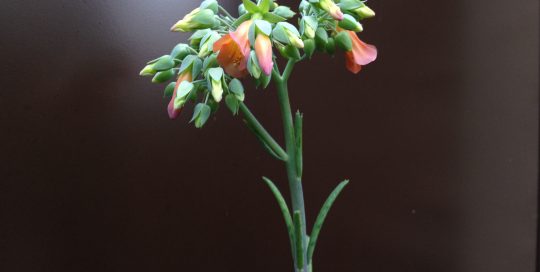What to Do With Your Easter Lily (and Some History)
Views: 4855
-300x209.jpg)
Many people decorate their homes and churches with Easter lilies this time of year. Now that the holiday has passed, what becomes of these beautiful flowering bulbs? I imagine many end up in the landfill. But did you know that they can be planted in your garden and, more often than not, will rebloom for years to come?
History of the Easter Lily
The Easter lily has a pretty interesting story. Lily flowers in general have been used throughout history to symbolize purity, fertility, and hope. The Easter lily, or Lily longiflorum, is native to the southern islands of Japan. It was introduced to England in 1819 when plant explorer, Carl Peter, sent bulbs back to his native country. They became so popular by the 1850s that mass commercial production began in Bermuda, a British territory with more ideal climate conditions. They were commonly referred to as Bermuda lilies during this time.
The shift to the name Easter lily didn’t occur until the 1880s when Ms. Thomas Sargent visited Bermuda and fell in love with the flower. She brought some back to her home in Philadelphia. She convinced nurseryman William Harris to force flowering in his greenhouse in spring. He sold them to florists and they soon became a popular plant for Easter. Christians use the beautiful white flower to symbolize the purity of Christ. They interpret the trumpet shape as God calling his son home. Production shifted back to Japan after a virus and nematode combination wiped out the plant in Bermuda in 1898.
The Americas
Introduction of the Easter lily to America is credited to Louis Houghton, a World War I veteran who returned from the war to Oregon in 1919 with a suitcase full of bulbs he shared with friends and family. However, Japan continued to dominate production of the Easter lily until World War II. Supplies were cut off after the attack on Pearl Harbor in 1941. Luckily, descendants of Houghton’s bulbs were still scattered around the west coast. An Easter lily frenzy ensued as growers realized the potential profit that could be made by satisfying America’s demand for these beautiful flowers.
At the height of this frenzy, there were some 1200 growers along the west coast. However, the plant’s very specific climate needs soon whittled this down to ten farms around the Oregon-California border. These supply all the Easter lily bulbs for the United States and Canada today.
Because Easter falls on a different calendar date each year, getting the bloom timing right is a difficult process for growers. Heck, just getting a bulb big enough to ship to growers is a four-year process and then growers have to adjust their calendars and artificial lighting to provide the 1000 hours of cool moist conditions to stimulate blooms just before the arrival of the Easter holiday. Easter lilies seem like a bargain after factoring in all of these conditions.
Keeping Easter Lilies
So, considering all of the above, it seems like a real shame to throw away these beautiful plants.
Instead, enjoy the potted plants in your home while they flower by placing them in a cool bright room out of the reach of curious kitties (lilies are poisonous to cats). Also keep them away from drafts, and remove the foil wrapper to prevent overwatering (place a saucer underneath).
Only water Easter lilies when soil feels dry to the touch. Also, to prevent pollen from staining table surfaces and to prolong flower life, gently remove the yellow anthers from the center of the blooms. Remove any spent flowers, as well.
Transplanting Easter Lilies to the Garden
Once all blooms have faded and danger of frost has passed, transplant the bulbs to a spot in your garden that receives part to full sun (morning sun is better than hot afternoon sun). Plant the bulbs about six inches deep in well-draining soil. The foliage will die back to the ground, but should regrow as summer progresses. You may even see some rebloom in the first year. Keep in mind that Lilies don’t naturally bloom around Easter, but rather in June or July depending on where you live. Also, if you have deer or rabbit issues, Lilies will need to be protected from browsing.
Happy Easter!
Meet Abbi Hayes
Abbi's Recent Posts

Kalanchoe delagoensis: Mother of Millions







